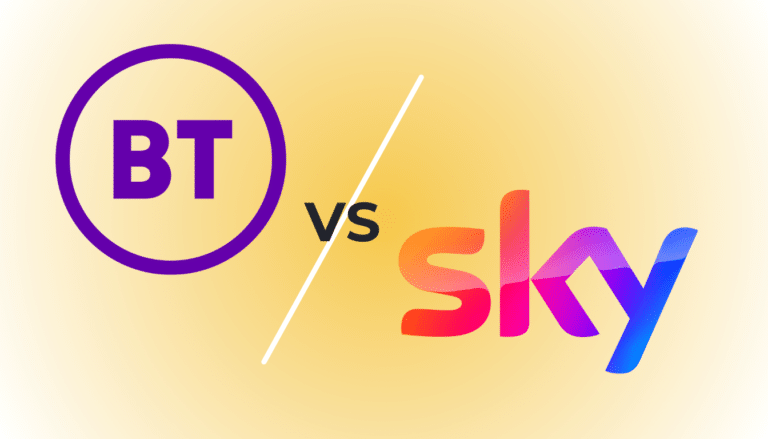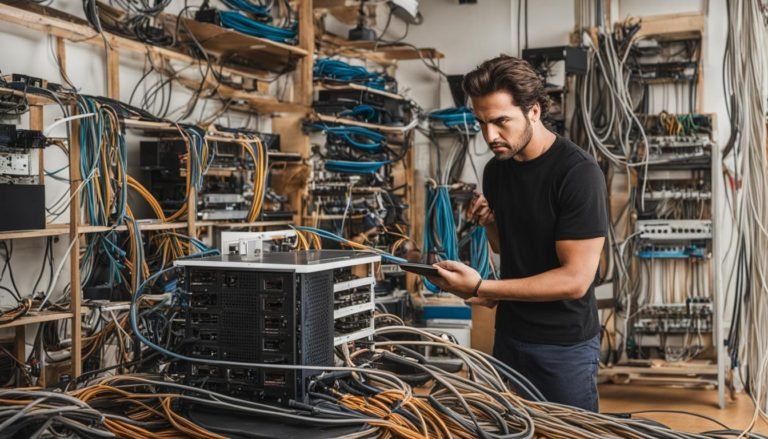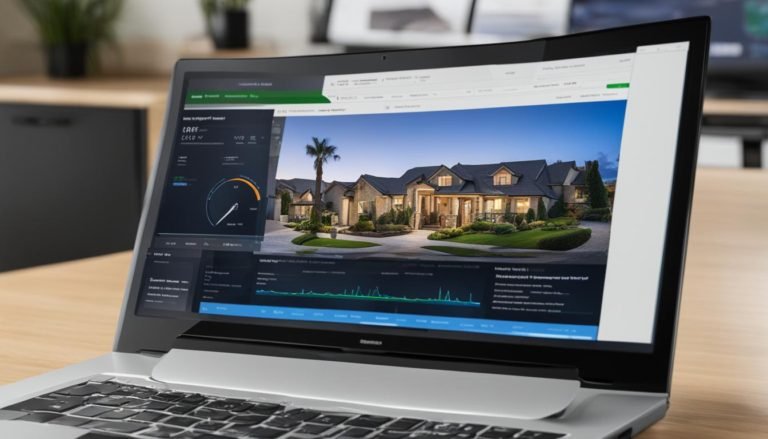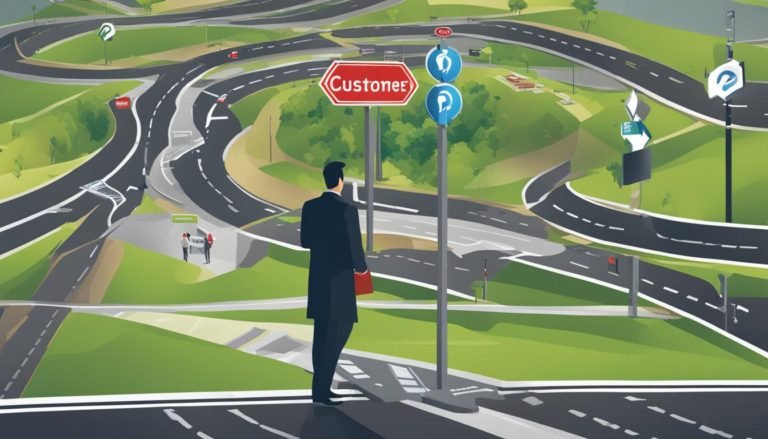Hello, and welcome to our article on the role of fibre optics in modern broadband. In today’s digital age, high-speed internet and reliable connectivity have become essential for both households and businesses. This is where fibre optic technology comes into play, revolutionizing the way we connect to the online world. Let’s dive deeper into the world of fibre optics and explore how it has transformed broadband connectivity.
Key Takeaways:
- Fibre optic technology has revolutionized broadband connectivity, providing faster internet speeds and improved network performance.
- Fibre optic cables transmit data using pulses of light, allowing for enhanced data transmission and more reliable internet connections.
- Fibre optic broadband offers numerous benefits such as faster downloads, high-quality streaming, and reduced buffering times.
- Fibre optic technology is not limited to broadband; it has various applications in industries like telecommunications, medicine, industrial automation, and environmental monitoring.
- Choosing fibre optic broadband over traditional options provides advantages like increased speed, reliability, and enhanced data security.
How does fibre optic broadband work?
Fibre optic broadband is a revolutionary technology that utilizes fibre-optic cables to transmit data at high speeds. Unlike traditional broadband, which relies on electrical signals, fibre optic broadband uses pulses of light for data transmission. These pulses of light are able to carry a larger volume of data, resulting in faster internet speeds and improved network performance.
There are two main types of fibre optic broadband connections: fibre to the cabinet (FTTC) and fibre to the premises (FTTP). FTTC uses fibre-optic cables from the broadband exchange to a green cabinet, which is then connected to your home using copper wires. FTTP, on the other hand, uses fibre-optic cables all the way to your premises, providing a direct fibre connection and significantly faster internet speeds.
The process of data transmission in fibre optic broadband involves converting electrical signals into pulses of light that travel through the fibre-optic cables. These pulses of light carry the data to its destination, where it is then converted back into electrical signals for use by devices. This efficient and reliable method of data transmission is what allows fibre optic broadband to deliver speeds of up to 1000Mbps (1Gbps) and beyond.

The Benefits of Fibre Optic Broadband
Fibre optic broadband offers numerous advantages over traditional broadband options. With its faster internet speeds, reliable connection, and enhanced network performance, fibre optic broadband is revolutionizing the way we use the internet.
One of the key benefits of fibre optic broadband is its ability to deliver faster internet speeds. By using fibre-optic cables to transmit data using pulses of light, fibre optic broadband can provide speeds that far surpass those of traditional broadband. This means faster downloads, seamless streaming, and reduced buffering times, allowing you to enjoy high-quality streaming without interruption.
Not only does fibre optic broadband offer faster speeds, but it also provides a more reliable connection. Fibre optic cables are less susceptible to interference and signal loss compared to traditional copper cables, resulting in a more stable and consistent internet connection. This is particularly important for activities that require a reliable internet connection, such as video conferencing, online gaming, and remote work.
The enhanced network performance of fibre optic broadband further contributes to its benefits. With fibre optic technology, data can be transmitted over longer distances without losing quality or speed. This means that you can enjoy a fast and reliable internet connection, regardless of your location within the network. Whether you’re browsing the web, streaming videos, or downloading large files, fibre optic broadband ensures a smooth and seamless online experience.
Table: Fibre Optic Broadband vs. Traditional Broadband
| Features | Fibre Optic Broadband | Traditional Broadband |
|---|---|---|
| Internet Speeds | Faster | Slower |
| Reliability | More reliable | Less reliable |
| Network Performance | Enhanced | Standard |
| Bandwidth | Higher | Lower |
| Security | More secure | Less secure |
Fibre optic broadband offers faster internet speeds, a reliable connection, high-quality streaming capabilities, reduced buffering, and enhanced network performance. It is a superior choice for those who value seamless online experiences and need a fast and reliable internet connection for various activities. As technology continues to advance and the demand for high-speed internet grows, fibre optic broadband is paving the way for the future of connectivity.
Applications of fibre optic technology
Fibre optic technology has revolutionized various industries, providing innovative solutions and enhancing performance. Let’s explore some of the applications of fibre optic technology in different sectors:
Telecommunications Systems
Fibre optic cables are widely used in telecommunications systems to transmit data over long distances. They offer high-speed data transmission and low signal loss, making them ideal for long-haul communication networks. Fibre optic technology enables seamless connectivity and supports the increasing demand for fast and reliable communication.
Endoscopes
In the medical field, fibre optic technology plays a crucial role in endoscopy procedures. Endoscopes equipped with fibre optic cables allow doctors to visualize internal organs and perform diagnostics without invasive surgery. The use of fibre optics in endoscopes provides clear and high-resolution imaging, improving the accuracy of medical examinations.
Industrial Automation
Fibre optic sensors are extensively used in industrial automation to monitor and control various processes. These sensors provide precise measurements and real-time feedback, enabling accurate control of industrial machinery and optimizing productivity. Fibre optic technology in industrial automation enhances efficiency and ensures reliable operation in critical manufacturing processes.
Scientific Instruments
Scientists rely on fibre optic technology in scientific instruments for accurate measurements and data collection. Spectrometers, for example, use fibre optic cables to transmit light signals, allowing scientists to analyze and study the composition of materials. Fibre optics enable precise measurements and enhance the capabilities of scientific instruments in research and analysis.
Environmental Monitoring
Fibre optic technology also finds applications in environmental monitoring systems. Fibre optic cables are utilized to measure changes in temperature, pressure, and other environmental factors. These cables provide real-time data, enabling scientists to monitor and analyze changes in the environment accurately. Fibre optic technology enhances the effectiveness of environmental monitoring, contributing to the understanding and preservation of ecosystems.
| Applications | Benefits |
|---|---|
| Telecommunications Systems | High-speed data transmission Low signal loss |
| Endoscopes | Clear and high-resolution imaging Non-invasive diagnostics |
| Industrial Automation | Precise measurements Real-time control |
| Scientific Instruments | Accurate measurements Enhanced research capabilities |
| Environmental Monitoring | Real-time data collection Effective analysis |
Fibre Optic Broadband vs. Traditional Broadband
When it comes to choosing between fibre optic broadband and traditional broadband, there are several important factors to consider. The main differences between the two lie in speed, reliability, bandwidth, and security. Let’s take a closer look at each of these aspects to help you make an informed decision:
“Fibre optic broadband offers faster speeds and larger bandwidth, allowing for quicker downloads and smoother internet performance.”
Fibre optic broadband utilizes fibre-optic cables to transmit data using pulses of light, resulting in faster speeds compared to traditional broadband, which relies on copper cables. This means you can enjoy quick downloads, seamless streaming, and reduced buffering times with fibre optic broadband. On the other hand, traditional broadband may have slower speeds and limited bandwidth, leading to slower downloads and buffering issues.
When it comes to reliability, fibre optic broadband shines. Its dedicated fibre-optic cables ensure a consistent and uninterrupted connection, whereas traditional broadband may be subject to signal loss and intermittent connectivity issues. This makes fibre optic broadband a more reliable choice, especially for those who rely heavily on a stable internet connection for work or entertainment purposes.
Another key aspect to consider is security. Fibre optic cables are not susceptible to electromagnetic interference, making them more secure for transmitting sensitive data. This makes fibre optic broadband a preferred option for individuals and businesses that prioritize data security.
In summary, fibre optic broadband outperforms traditional broadband in terms of speed, reliability, bandwidth, and security. While it may come with a slightly higher upfront or monthly cost, the benefits it offers make it a worthwhile investment for those seeking a fast, reliable, and secure internet connection.
Fibre Optic Broadband and the Future of Connectivity
The role of fibre optic broadband in the future of connectivity cannot be overstated. As technology continues to advance and the demand for high-speed internet grows, fibre optic broadband is at the forefront of providing ultrafast broadband and supporting the digital infrastructure. With its ability to provide faster speeds, improved reliability, and enhanced network performance, fibre optic broadband is the key to meeting the increased demand for connectivity in the digital age.
Fibre optic broadband is paving the way for ultrafast broadband, offering internet speeds that can exceed 1Gbps (gigabits per second) and beyond. This unparalleled speed enables seamless downloads, high-quality streaming, and a smoother online experience. As more and more devices become interconnected and rely on a strong internet connection, fibre optic broadband ensures that businesses and households can keep up with the demands of modern technology.
The future of connectivity heavily relies on fibre optic broadband as it provides the necessary infrastructure to support the growing demands of data-intensive applications and services. Whether it’s video conferencing, cloud computing, or Internet of Things (IoT) devices, fibre optic broadband delivers the fast and reliable connection needed to power these technologies. It lays the foundation for a connected world, where information can be accessed instantaneously and data can be transmitted seamlessly.
In conclusion, fibre optic broadband is instrumental in shaping the future of connectivity. Its ability to provide ultrafast broadband, support digital infrastructure, and meet the increased demand for high-speed internet makes it an essential technology for the modern world. With fibre optic broadband, we can embrace the opportunities brought by the digital age and unlock the full potential of technology in various industries and everyday life.
Choosing between fibre optic and ADSL broadband
When it comes to choosing the right broadband connection for your needs, there are two main options to consider: fibre optic broadband and ADSL broadband. Both have their own advantages and drawbacks, and it’s essential to weigh them carefully to make an informed decision. Let’s take a closer look at the key factors to consider when choosing between fibre optic and ADSL broadband: speed, reliability, and affordability.
Speed
One of the significant differences between fibre optic and ADSL broadband is the speed they offer. Fibre optic broadband utilizes advanced technology that allows for faster data transmission, resulting in quicker download and upload speeds. With fibre optic broadband, you can enjoy seamless streaming, lag-free online gaming, and rapid file downloads. ADSL broadband, on the other hand, operates over traditional copper telephone lines and offers comparatively slower speeds. If high-speed internet is a priority for you, fibre optic broadband is the clear winner.
Reliability
Reliability is another crucial factor to consider when choosing a broadband connection. Fibre optic broadband is known for its reliability, offering a stable and consistent internet connection. Its dedicated lines ensure minimal signal loss and fewer disruptions during peak usage times. On the other hand, ADSL broadband can be susceptible to interference, resulting in occasional dropouts and slower speeds. If reliability is essential for your online activities, fibre optic broadband is the more dependable choice.
Affordability
While fibre optic broadband delivers superior speed and reliability, it typically comes at a slightly higher cost compared to ADSL broadband. The installation and equipment costs for fibre optic broadband can be higher, and monthly tariffs may also be more expensive. ADSL broadband, on the other hand, is generally more affordable, making it an attractive option for budget-conscious individuals. If affordability is your primary concern, ADSL broadband may be the more suitable choice.
Ultimately, the choice between fibre optic and ADSL broadband depends on your specific needs and priorities. If you require high-speed internet, reliable connectivity, and are willing to invest a bit more, fibre optic broadband is the ideal option. However, if budget considerations are paramount and speed is not a top priority, ADSL broadband can still provide a decent internet experience. Assess your requirements and consider the factors of speed, reliability, and affordability to make an educated decision that suits your needs.
| Factors | Fibre Optic Broadband | ADSL Broadband |
|---|---|---|
| Speed | High-speed internet with faster downloads and uploads | Comparatively slower speeds |
| Reliability | Stable and consistent connection with minimal disruptions | Occasional interruptions and slower speeds due to interference |
| Affordability | Generally higher installation and monthly costs | More affordable option |
Take the time to evaluate your internet requirements and consider the pros and cons of each broadband option. This will help you make an informed decision that ensures a satisfying and reliable online experience.
The impact of fibre optic technology on various industries
Fibre optic technology has had a significant impact on various industries, revolutionizing the way they operate and improving productivity. By enabling faster and more reliable communication, fibre optic technology has transformed the way businesses connect and collaborate.
In the manufacturing sector, fibre optic technology has led to improved productivity through precise measurement and control of industrial processes. With fibre optic sensors, manufacturers can gather accurate data in real-time, allowing for better quality control and process optimization. This has led to increased efficiency, reduced waste, and improved overall productivity.
Furthermore, fibre optic communication has revolutionized the way businesses interact and share information. With advanced communication tools like video conferencing and Voice over Internet Protocol (VoIP), organizations can connect seamlessly across different locations. This has not only enhanced collaboration but also reduced the need for travel, resulting in cost savings and increased efficiency.
“Fibre optic technology has transformed the way businesses communicate, collaborate, and operate. Its impact on industries such as manufacturing and communication has been profound, leading to improved productivity, efficiency, and connectivity.” – Industry Expert
Table: Impact of Fibre Optic Technology on Industries
| Industry | Impact of Fibre Optic Technology |
|---|---|
| Manufacturing | Improved productivity through precise measurement and control of industrial processes. |
| Communication | Enhanced connectivity and collaboration through advanced communication tools like video conferencing and VoIP. |
| Data Security | Enhanced data security and protected transmission, crucial for industries handling sensitive information. |
| Healthcare | Improved medical procedures and diagnostics through fibre optic-based endoscopes and imaging technology. |
| Research | Accurate data collection and analysis in scientific fields through fibre optic sensors and instruments. |
Data security is another essential aspect impacted by fibre optic technology. Fibre optic cables provide enhanced security for transmitting sensitive information. Unlike traditional copper cables, fibre optic cables are not susceptible to electromagnetic interference, making them more secure. This is particularly crucial for industries that handle confidential customer data and trade secrets, ensuring secure transmission and safeguarding sensitive information.
In the healthcare industry, fibre optic technology has revolutionized medical procedures and diagnostics. Fibre optic-based endoscopes allow doctors to view internal organs without invasive surgery, reducing patient discomfort and recovery time. Additionally, fibre optic imaging technology has improved the accuracy and efficiency of medical diagnostics, leading to better patient outcomes.
Overall, the adoption of fibre optic technology has driven innovation and growth in various industries. It has improved productivity, enabled advanced communication, ensured data security, and enhanced healthcare procedures. As technology continues to evolve, fibre optic technology will continue to play a crucial role in shaping the future of industries across the board.
Conclusion
In conclusion, fibre optic technology plays a vital role in modern broadband, revolutionizing internet connectivity. With its use of fibre optic cables and advanced data transmission techniques, it provides a reliable and high-speed internet connection for users. Fibre optic broadband offers faster internet speeds, improved network performance, and enhanced security compared to traditional broadband options.
Fibre optic technology has paved the way for next-generation broadband, providing the necessary infrastructure for ultrafast internet. It has transformed the way we access and use the internet, enabling faster downloads, seamless streaming, and better overall internet performance. Fibre optic networks are at the forefront of the future of connectivity, meeting the increasing demand for high-speed internet in households and businesses.
We understand the importance of fibre optics in modern broadband. It has significantly improved data transmission, resulting in faster internet speeds and enhanced network performance. Fibre optic technology is the foundation of reliable internet connectivity, offering a seamless online experience for users. As we move forward, fibre optic technology will continue to drive innovation and shape the future of broadband connectivity.
FAQ
What is fibre optic broadband?
Fibre optic broadband, also known as fibre-optic broadband, is the most common broadband connection in the UK. It uses fibre-optic cables to transmit data using pulses of light, allowing for faster and more reliable internet speeds compared to traditional copper cables.
How does fibre optic broadband work?
Fibre optic broadband works by using fibre-optic cables to transmit data using pulses of light instead of electrical signals. More data can fit into these light pulses, allowing for faster internet speeds. There are two types of fibre connections: fibre to the cabinet (FTTC) and fibre to the premises (FTTP).
What are the benefits of fibre optic broadband?
Fibre optic broadband offers several benefits compared to traditional broadband. It provides faster internet speeds, allowing for quick downloads and seamless streaming. Fibre optic cables also offer a more reliable connection with minimal signal loss, resulting in fewer interruptions and buffering.
In what other applications is fibre optic technology used?
Fibre optic technology has various applications beyond broadband. It is commonly used in telecommunications systems for long-distance data transmission. Fibre optic cables are also used in medical procedures, industrial automation, scientific instruments, and environmental monitoring systems.
How does fibre optic broadband compare to traditional broadband?
Fibre optic broadband offers faster speeds, more reliable connectivity, and increased security compared to traditional broadband options. While it may have a slightly higher cost, its benefits outweigh those of traditional broadband.
Which should I choose, fibre optic or ADSL broadband?
Fibre optic broadband offers faster speeds and more reliable connectivity compared to ADSL broadband. However, it may come at a slightly higher cost. The decision ultimately depends on individual needs, budget, and the importance of a fast and reliable internet connection.
What is the impact of fibre optic technology on various industries?
Fibre optic technology improves productivity in sectors such as manufacturing, enables advanced communication tools, and provides enhanced data security. Its adoption drives innovation and growth in industries, leading to improved efficiency and performance.
How does fibre optic broadband contribute to the future of connectivity?
Fibre optic broadband plays a crucial role in the future of connectivity by providing faster speeds, improved reliability, and enhanced network performance. It supports the digital infrastructure and meets the growing needs of households and businesses in the digital age.











